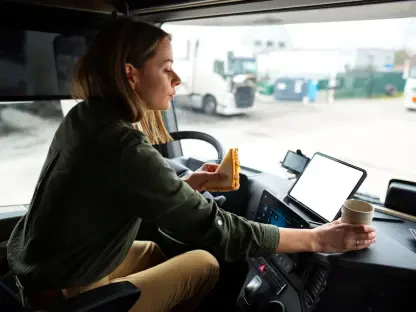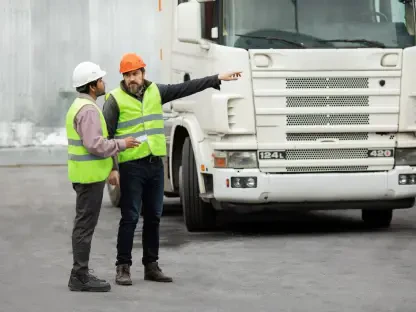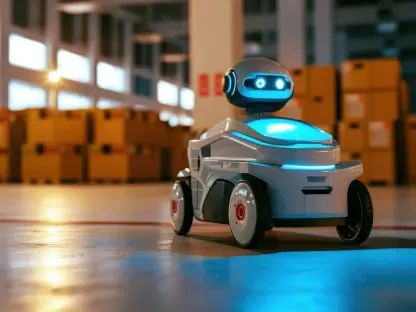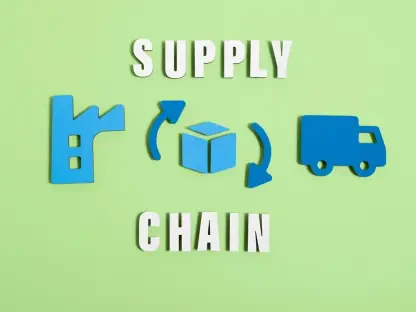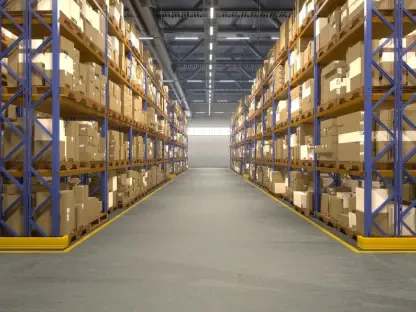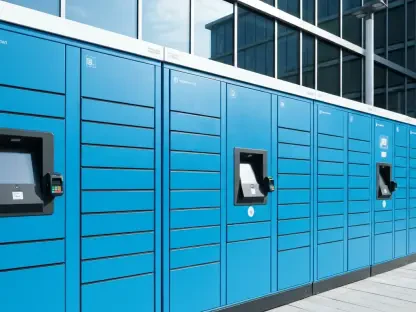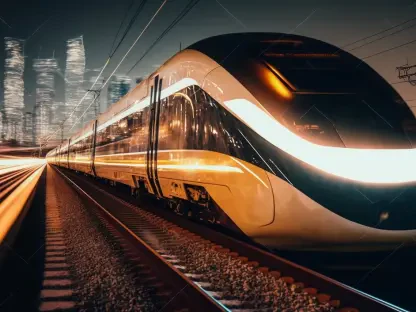Industrial robots are revolutionizing the field of internal logistics, particularly within the manufacturing sector. The advent of advanced robotics has not only enhanced productivity but also improved safety and operational efficiency in factories. This shift is primarily driven by the integration of industrial robots, including mobile robots and collaborative robots (cobots), into modern manufacturing environments.
The Rise of Industrial Robots
Proliferation and Integration of Industrial Robots
Industrial robot manufacturers have been pivotal in pushing the boundaries of what modern factories can achieve. These robots, designed to handle tasks such as assembly and packaging with remarkable precision and speed, seamlessly integrate into existing workflows. This integration results in heightened productivity and reduced operational costs.
A notable development in this realm is the rise of mobile industrial robots, which autonomously adapt to various tasks within complex environments. These robots excel in material handling and goods transportation across expansive facilities, streamlining internal logistics processes. Beyond manufacturing, collaborative robots (cobots) equipped with advanced safety features and user-friendly interfaces are becoming integral to smaller enterprises, democratizing robotic technology.
Enhancing Operational Efficiency and Safety
Mobile robots, like those produced by Mobile Industrial Robots (MiR), are transforming internal logistics by offering flexibility and efficiency unmatched by traditional fixed automation systems. Reprogrammable and repurposable, these robots dynamically respond to the evolving needs of the manufacturing sector, ultimately leading to safer and more efficient work environments. Equipped with advanced sensors and navigation systems, these robots can operate safely alongside human workers, allowing robots to manage repetitive or hazardous tasks while human employees focus on strategic roles. This synergy not only boosts overall productivity but also ensures that worker safety and job satisfaction are not compromised.
These robots are designed to seamlessly interact with human operators, creating a harmonious collaboration between man and machine. By handling manual and often hazardous tasks, mobile robots minimize human exposure to potential workplace dangers, reducing the incidence of injuries and improving overall workplace safety. The adaptability of these robots to various tasks also implies their utility in a wide range of industries, thus enhancing operational efficiency on multiple fronts. Whether it’s lifting heavy objects or transporting goods, the role of these robots in modern manufacturing cannot be overstated.
Impact on Factory Transportation
Revolutionizing Material Movement
Transportation robots, like those produced by MiR, have significantly enhanced the movement of materials within factories. By autonomously transporting goods across large manufacturing floors, these robots minimize the need for human intervention, thereby reducing labor costs and human errors. This automation fosters a more organized and efficient production environment by ensuring the timely and precise delivery of materials. The meticulousness of these robots aids in preventing production bottlenecks and delays, which are crucial for maintaining a consistent workflow and meeting production deadlines.
Moreover, the precision with which these robots operate ensures that materials are moved without any damage, thus maintaining the quality of goods throughout the production process. Increasing reliance on transportation robots also means that human workers can be redeployed to more critical and strategic areas, thereby maximizing labor efficiency. This shift towards automation reduces the risk of human error, significantly enhancing the reliability and consistency of production processes, paving the way for higher quality standards and improved customer satisfaction.
Contribution to Sustainability
Mobile robots also contribute to enhanced sustainability in manufacturing operations. Being electric-powered, they diminish the reliance on traditional gas-powered forklifts and other vehicles, reducing the carbon footprint of manufacturing processes. Their precise navigation and optimized routing conserve energy and minimize wear-and-tear on factory floors, aligning with corporate sustainability goals and potentially leading to cost savings in energy consumption and facility maintenance. This environmentally-friendly approach is becoming increasingly crucial as companies strive to meet stringent environmental regulations and sustainability targets.
In addition to reducing emissions, mobile robots facilitate efficient space utilization within factories, minimizing the need for extensive infrastructure investments. Their compact design and ability to navigate tight spaces ensure optimal use of floor space, which translates into lower energy consumption for heating, cooling, and lighting. This efficient energy use can lead to substantial cost savings over time while also contributing to the company’s overall sustainability initiatives. As global demand for more sustainable practices grows, the adoption of mobile robots offers a viable pathway for manufacturers to achieve their eco-friendly goals.
The Future with AI and Machine Learning
Advanced Predictive Maintenance
The future of internal logistics is poised to be further transformed by integrating advanced technologies such as artificial intelligence (AI) and machine learning with existing automation systems. Industrial robot manufacturers are already exploring AI-driven analytics to predict maintenance needs, optimize robotic operations, and ensure uninterrupted production cycles. This proactive approach enhances equipment lifespan and maintains continuous production.
AI and machine learning can analyze vast amounts of data from various sensors and operational logs to identify potential issues before they become major problems. This predictive capability ensures that maintenance can be scheduled at the most opportune times, minimizing downtime and maximizing productivity. Additionally, the integration of these technologies can lead to smarter, more efficient robots that can adapt to changes in their environment and continually optimize their performance to meet dynamic production requirements.
Expanded Capabilities and Roles
Industrial robots are significantly transforming internal logistics, especially within the manufacturing sector. The rise of advanced robotics has dramatically increased productivity levels while also enhancing safety and operational efficiency in factory settings. Today, the use of industrial robots—including mobile robots and collaborative robots, often referred to as cobots—has become an integral part of modern manufacturing processes.
The implementation of these technologies allows for more streamlined operations, reducing human error and minimizing downtime. Mobile robots can navigate factory floors autonomously, transporting materials efficiently, and freeing up human workers for more complex tasks. Meanwhile, cobots work alongside human employees, assisting with repetitive or physically demanding tasks, thus mitigating the risk of workplace injuries.
Moreover, the versatility of industrial robots means they can be adapted to a variety of tasks, from assembly to quality control. This adaptability not only boosts productivity but also optimizes workflows. As technology continues to advance, the role of industrial robots in manufacturing is expected to grow even more, setting new standards for efficiency and innovation in internal logistics.



